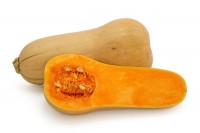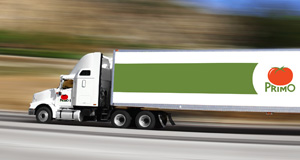
July 28- August 3, 2013
Market Outlook
Lettuce:
Market is very active with light supplies. Shippers are holding customers to weekly averages.
Leaf:
Romaine / leaf market is steady at higher levels. We are seeing some tip burn on inbound, otherwise quality has been good
Broccoli:
Broccoli market is steady. Quality remains good.
Cauliflower:
Cauliflower market continues on a rollercoaster ride and cost is firming up. We are seeing good quality.
Carrots:
The Market on carrots has remained steady with good quality out of Mexico. Michigan will start in a week or two,
Celery:
Market remains steady. Quality has been very good on both Eastern and Western celery.
Strawberries:
Quality is fair to good with most lots showing some minor bruising on inbound. Also reports of the occasional moldy berry. Market is steady.
Potatoes:
Idaho market is getting extremely tight and cost is increasing almost daily. #2’s are very scarce. Most shippers are quoting marginal quality on the remainder of storage crop. Many shippers are now at a fob final on #2 product. This will likely remain in effect until mid August or until new crop starts.
Onions:
Market on onions as not changed this week. We are sourcing out of Texas and New Mexico, Jumbo yellows are on the bigger side this week with very good quality.
Citrus:
Market is steady on both lemons and oranges with good quality.
Cucumbers:
The market on cucumbers have come off a bit with more availability as Ohio has now started.
Peppers:
Pepper market is steady and we are seeing very nice quality out of New Jersey.
Tomatoes:
Tomato market is up again on rounds. Shippers report very light supplies. Most of the regional deals are behind by a few weeks, adding further pressure to the market. Romas are steady. Grape and cherry market is very unsettled as there is a wide range on quality and cost from varied shipping points.
Feature of the Week
This week Primo is featuring butternut squash!
Beige colored and shaped like a vase. This is a more watery squash and tastes somewhat similar to sweet potatoes. It has a bulbous end and pale, creamy skin, with a choice, fine-textured, deep-orange flesh with a sweet, nutty flavor. It weighs from 2 to 5 pounds. The orange the color, the riper, drier and sweeter the squash.
Recipe of the Week
Butternut Squash Casserole
1 butternut squash
1 cup white sugar
1 1/2 cups milk
1 teaspoon vanilla extract
1 pinch salt
2 tablespoons all-purpose flour
3 eggs
1/4 cup margarine, melted
TOPPING
1/2 (16 ounce) package vanilla wafers, crushed
1/2 cup margarine, melted
1 cup brown sugar
Directions
Preheat oven to 425 degrees F (220 degrees C).
Put butternut squash in the microwave and cook on high, until soft, 2 to 3 minutes. Cut in half, scoop out seeds and cube. Bring a large pot of water to a boil. Add squash and cook until tender, about 15 minutes. Drain and mash.
In a 9×13 inch casserole dish combine 3 cups mashed butternut squash, white sugar, milk, vanilla extract, salt, flour, eggs and 1/4 cup melted margarine.
Bake in preheated oven for 45 minutes, or until set.
In a medium bowl combine crushed vanilla wafers, 1/2 cup melted margarine and brown sugar. Crumble over top of cooked casserole and return to oven to brown.
Fun Facts of the Week
- Butternut Squash is a good source of fiber, vitamin C, manganese, magnesium, and potassium. It is also an excellent source of vitamin A.
- Butternut squash is a vegetable that can be roasted and toasted and also be puréed or mashed into soups, casseroles, breads, and muffins.
- Butternut squash is in the same family as melons and cucumbers.
- Although most people discard the skin and seeds of butternut squash, the seeds are edible and quite tasty, especially if roasted and lightly salted like pumpkin seeds.


